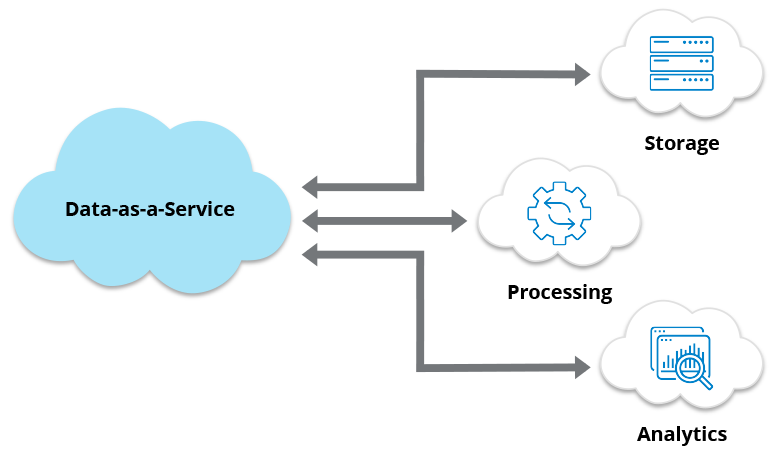What Is Data-as-a-Service (DaaS)?
Data as a service (DaaS) is a data management strategy and/or deployment model that focuses on the cloud (public or private) to deliver a variety of data-related services such as storage, processing, and analytics.
DaaS leverages the popular software-as-a-service (SaaS) paradigm, through which customers are able to use cloud-based software applications delivered over the network rather than deploying dedicated hardware servers for a specific set of tasks on a specific set of data. DaaS is not only about sharing a common infrastructure to achieve economies of scale, but also about sharing some of the data among various teams to allow greater collaboration and knowledge transfer within any organization. With DaaS, customers aspire to handle most of their storage, processing, and analytics needs in the cloud to help reduce data silos and data sprawl.

What Are the Benefits of Data-as-a-Service?
There are many benefits for organizations that choose DaaS as their primary delivery mechanism for data-related operations. This is especially true when run in the public cloud. For financial reporting, the ability to convert many IT costs that were traditionally capital expenditures to operational expenditures is appealing. Organizations and their investors leverage DaaS to track charges as they are incurred.
Some organizations feel that DaaS reduces the risk of vendor lock-in because of the popularity of technologies that support DaaS deployments. For example, there are a variety of storage services offered on Amazon Web Services, Google Cloud Platform, and Microsoft Azure that are similar in functionality. This means organizations have many storage options readily available to which they could switch over at any time. Or they can leverage multiple options in a single cloud or through a multi-cloud approach. DaaS not only reduces vendor lock-in, but also enables teams to explore many technologies to pick the right tool for any job.
By having data in a centralized infrastructure with DaaS, organizations gain economies of scale on infrastructure investment. It also helps promote the standardization of skill sets to make administration more efficient. In addition, it provides more opportunities for sharing data across the organization, leading to more collaboration and knowledge sharing.
What Are the Challenges of Data-as-a-Service?
Some of the benefits of DaaS can also be perceived as challenges. Since the intent of DaaS is to create a service that can be used by almost any team, the technology options can be overwhelming. This can sometimes make it difficult to determine where to start, or which is the right approach. Fortunately, there are a wealth of online comparisons of cloud platforms and the technologies they support.
Also, when transferring data to and across clouds, network performance may be a concern. If data transfer will be ongoing, it’s important to have a data movement strategy in place that leverages edge computing and compression where possible.